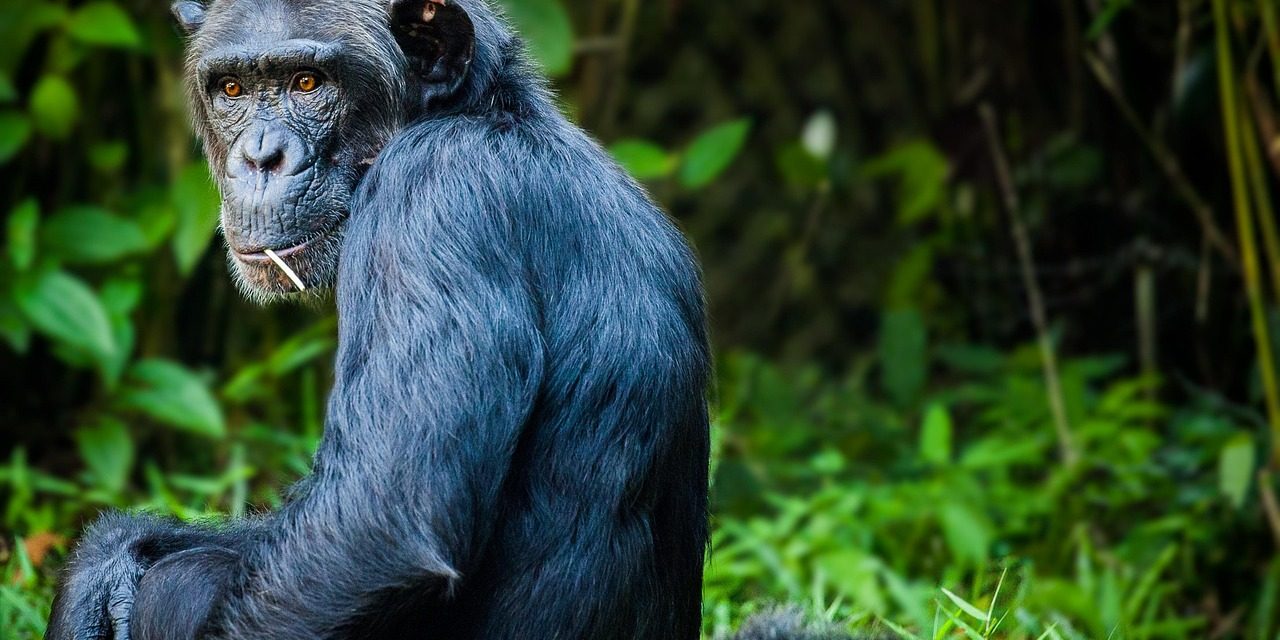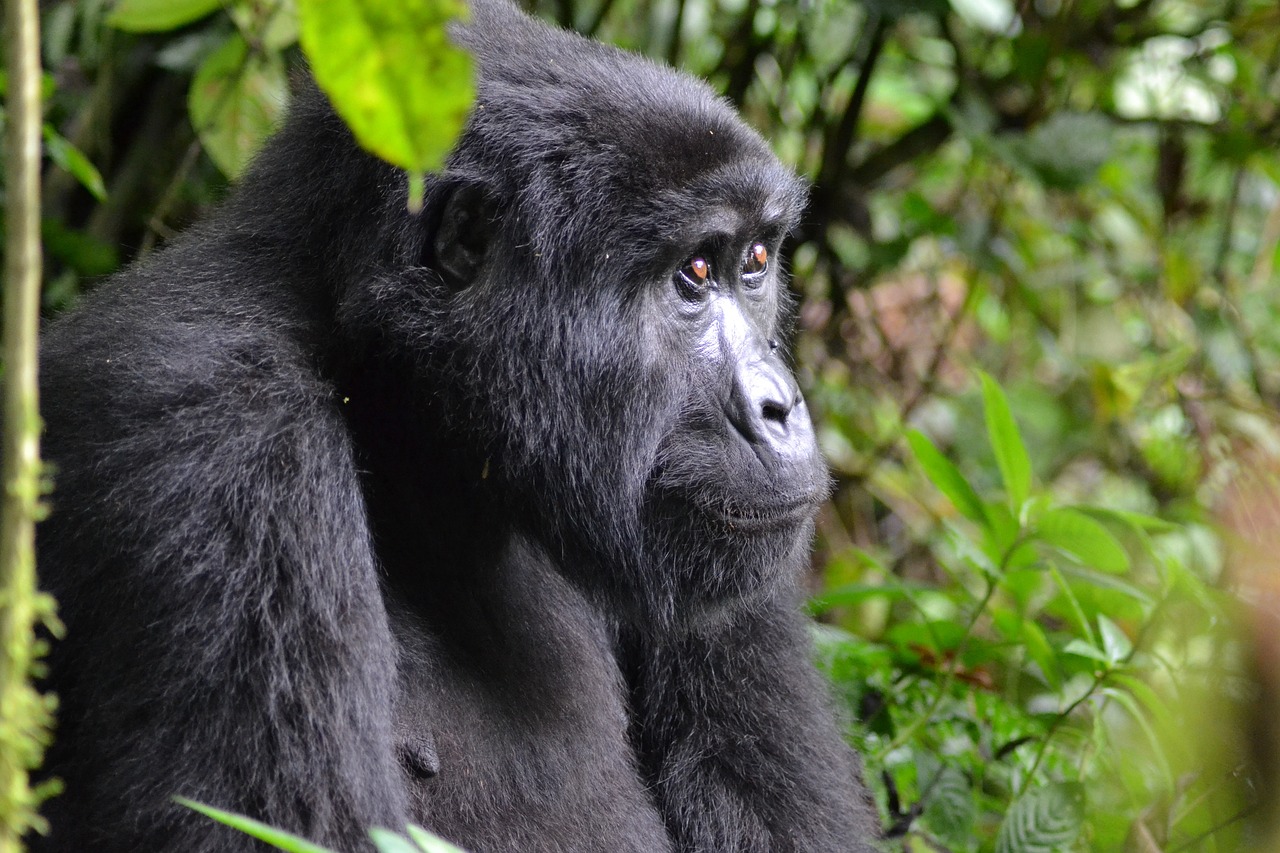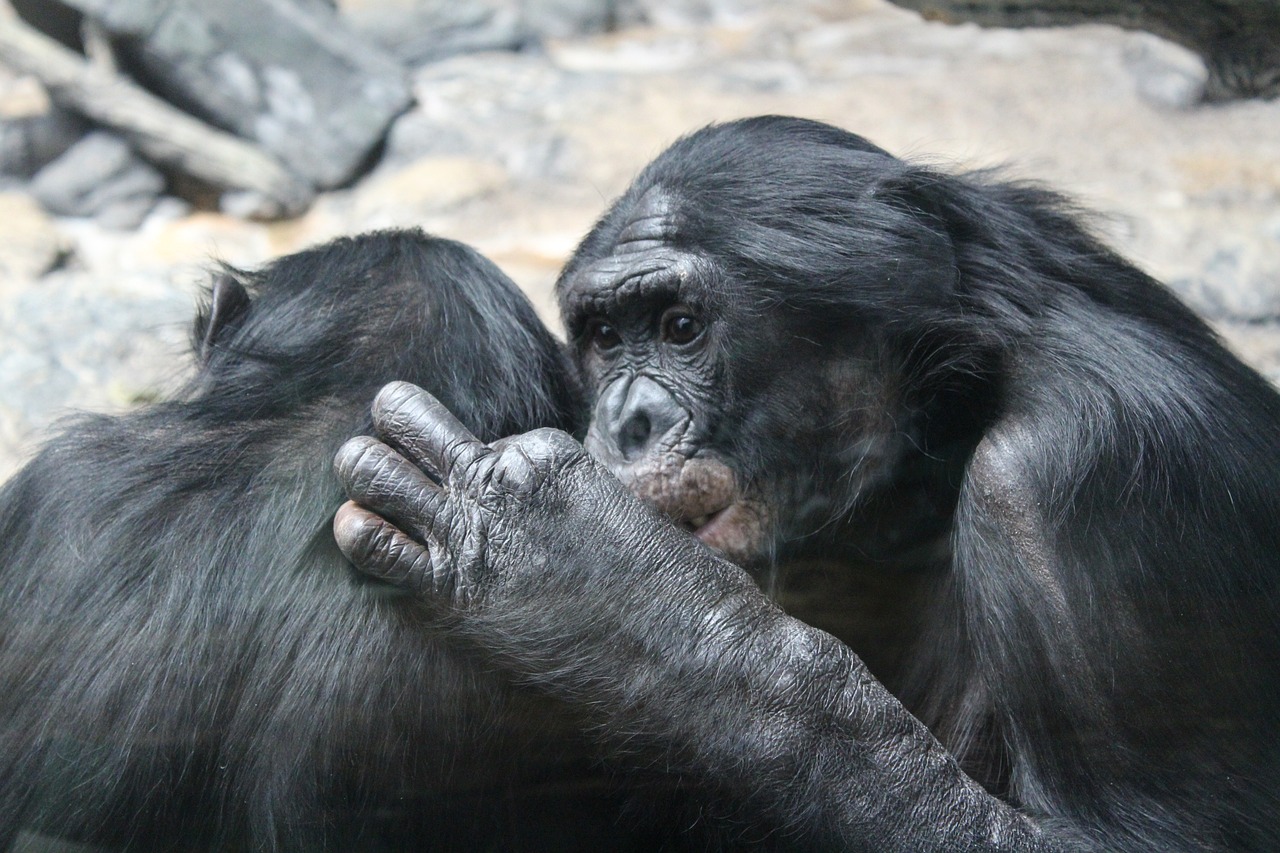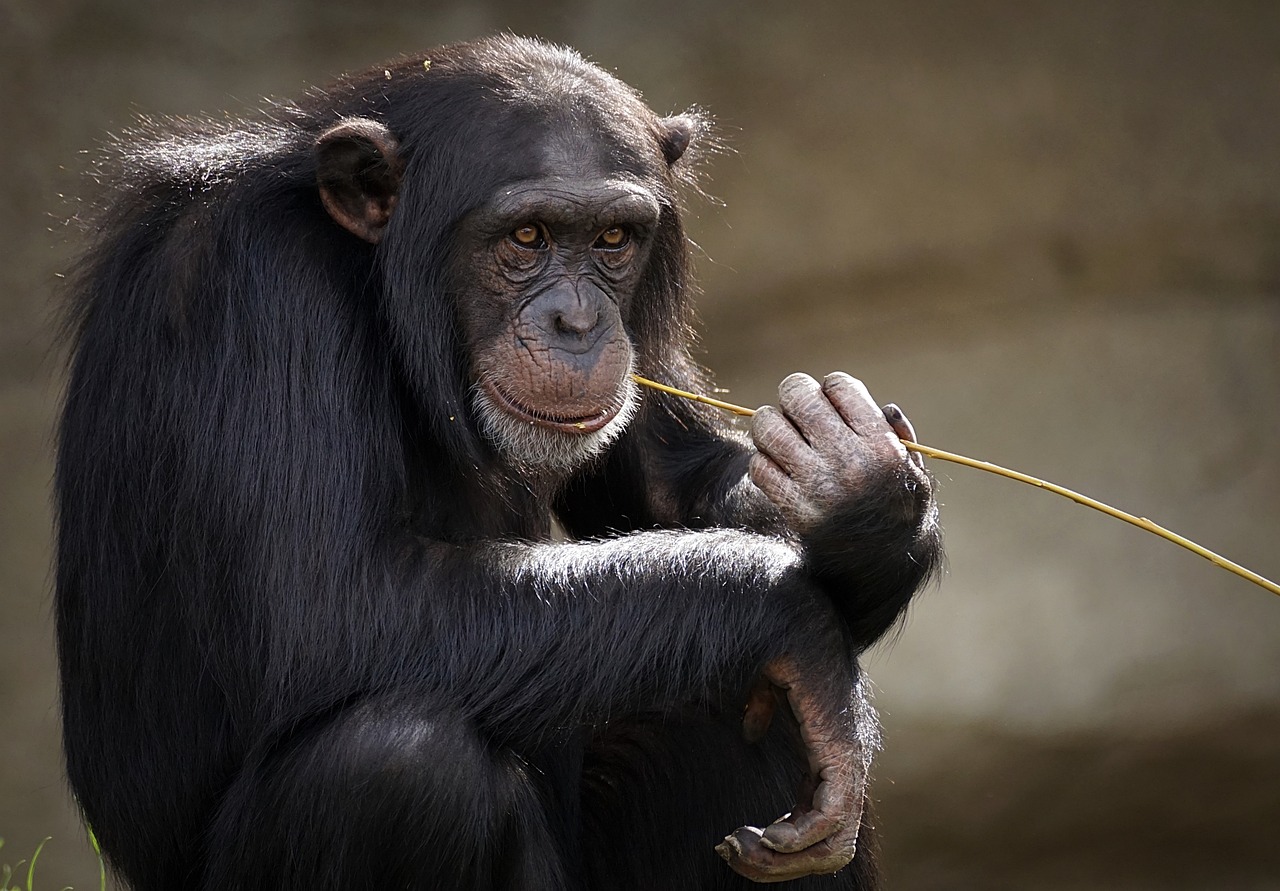Chimpanzee trekking is one of the most thrilling wildlife encounters you can experience on an African safari. Imagine walking deep into lush tropical forests, listening to the echoes of bird calls, and suddenly coming face-to-face with our closest living relatives—the intelligent and social chimpanzees. Their playful behavior, human-like interactions, and fascinating survival skills make chimp trekking a once-in-a-lifetime adventure for travelers seeking authentic encounters with nature.
In this comprehensive guide, Nature Nest Safaris explores everything you need to know about chimpanzee trekking safaris—from the best destinations in Africa to costs, age limits, trekking durations, fun facts, and expert tips to prepare for your journey.
What is Chimpanzee Trekking?
Chimpanzee trekking is the guided activity of tracking and observing wild chimpanzees in their natural habitat. Unlike game drives where you remain in a vehicle, trekking involves hiking through forests with an experienced ranger or guide until you find a community of chimpanzees.
Unlike gorilla trekking, which usually involves one large family group, chimpanzee societies (known as communities or troops) can number from 30 to over 100 individuals. They move frequently in smaller sub-groups, making the tracking experience dynamic and adventurous.
Once you locate them, visitors typically spend one hour observing their behavior—watching them forage, groom each other, play, climb trees, and even communicate with distinctive vocalizations.
Chimp trekking is not only an unforgettable wildlife experience but also a vital way to support conservation efforts that protect endangered primates and their habitats.
Where to Go Chimp Trekking
Chimpanzees are native to 21 African countries, but trekking is only possible in select national parks and reserves where conservation efforts allow for safe and sustainable tourism. The best destinations for chimpanzee trekking include:
-
Uganda – Kibale National Park, Budongo Forest, Kyambura Gorge, Kalinzu Forest
-
Tanzania – Gombe Stream National Park, Mahale Mountains National Park
-
Rwanda – Nyungwe Forest National Park, Gishwati-Mukura National Park
-
Democratic Republic of the Congo (DRC) – Virunga National Park, Ituri Forest
These destinations are managed with strict regulations to ensure both visitor safety and the protection of the chimpanzees.
Chimp Trekking in Uganda
Uganda is considered the world’s best destination for chimpanzee trekking, thanks to its large populations and multiple trekking sites.
-
Kibale National Park – Known as the “Primate Capital of the World,” it hosts over 1,500 chimpanzees. This is the most popular and reliable place for sightings, with a success rate of over 90%.
-
Budongo Forest (Murchison Falls National Park) – Home to around 800 chimps, this is a great alternative for those visiting northern Uganda.
-
Kyambura Gorge (Queen Elizabeth National Park) – Often called the “Valley of the Apes,” this scenic gorge is an adventurous trekking spot.
-
Kalinzu Forest – Close to Queen Elizabeth National Park, it’s less crowded but offers high chances of chimp encounters.
Uganda also offers chimpanzee habituation experiences, allowing visitors to spend up to four hours with chimps being gradually accustomed to human presence.
Chimp Trekking in Tanzania
Tanzania offers some of the most remote and wild chimp trekking experiences in Africa:
-
Gombe Stream National Park – Made famous by Jane Goodall’s groundbreaking chimpanzee research, Gombe offers intimate treks along the shores of Lake Tanganyika.
-
Mahale Mountains National Park – Often described as the most beautiful chimp trekking destination, Mahale combines pristine forests with stunning white-sand beaches along Lake Tanganyika. It hosts one of the largest protected chimp populations in Africa.
Trekking here often involves boat rides and longer hikes, making it ideal for adventurous travelers seeking an off-the-beaten-path safari.
Chimp Trekking in Rwanda
Rwanda is well-known for gorilla trekking, but it also offers rewarding chimpanzee treks:
-
Nyungwe Forest National Park – A vast montane rainforest that is home to about 500 chimps. Visitors often hear their loud pant-hoot calls before spotting them in the treetops.
-
Gishwati-Mukura National Park – Rwanda’s newest national park, offering more intimate and less crowded chimpanzee trekking.
The scenic beauty of Rwanda’s forests makes chimp trekking here a perfect add-on to a gorilla safari.
Chimp Trekking in the Democratic Republic of the Congo
The DRC is home to vast rainforests with some of Africa’s most untouched chimpanzee habitats.
-
Virunga National Park – Africa’s oldest national park, renowned for both mountain gorillas and chimpanzees.
-
Ituri Forest – Part of the Congo Basin, one of the richest biodiversity hotspots in the world.
While rewarding, chimp trekking in DRC is more suited to experienced travelers due to logistical challenges and security considerations.
How Much Does It Cost to Go Chimp Trekking?
Chimpanzee trekking permits vary by country:
-
Uganda:
-
Kibale National Park: $200 per person (trekking)
-
Chimp habituation experience: $250 per person
-
Kyambura Gorge & Kalinzu Forest: $50–100 per person
-
-
Tanzania:
-
Gombe Stream: $100 per person
-
Mahale Mountains: $80–100 per person
-
-
Rwanda:
-
Nyungwe Forest & Gishwati-Mukura: $90 per person
-
-
DRC:
-
Virunga & Ituri Forest: $100–150 per person
-
These costs often exclude park entry fees, guide services, and transport, so travelers should budget accordingly.
What is the Age Limit for Chimpanzee Trekking?
The minimum age for chimpanzee trekking is 12 years old in most countries.
This restriction exists to:
-
Protect children from the physical demands of trekking
-
Reduce the risk of transmitting human diseases to chimps (who share over 98% of our DNA)
-
Ensure safety during close wildlife encounters
How Long Does Chimpanzee Trekking Take?
The trekking duration varies depending on the chimp community’s location:
-
1 to 3 hours of hiking to locate the chimps
-
1 hour of observation once you find them
On average, the whole experience takes about 3 to 5 hours. The chimpanzee habituation experience can last half a day (4+ hours).
Interesting Chimpanzee Facts
-
Chimpanzees share 98.7% of human DNA.
-
They use tools—sticks for termites, stones to crack nuts, and leaves as sponges.
-
Chimps live in large fission-fusion societies, meaning groups split and merge frequently.
-
They communicate using over 60 different gestures and vocalizations.
-
Chimps can live up to 50 years in the wild.
-
They are endangered, with populations declining due to habitat loss, poaching, and disease.
The Best Time of Year to Go Chimp Trekking
Chimpanzee trekking is possible year-round, but the experience differs depending on the season:
-
Dry Season (June–September, December–February):
-
Trails are easier to hike
-
Chimps may range farther, making treks longer
-
-
Wet Season (March–May, October–November):
-
Forests are lush and green
-
Chimps are easier to find since food is abundant
-
Trails can be muddy and more challenging
-
For the best balance of comfort and sightings, many travelers choose the dry season.
What Should You Bring On a Chimp Trekking Safari?
A successful chimp trekking experience requires preparation. Essentials include:
-
Comfortable hiking boots
-
Lightweight, long-sleeved clothing (for protection from insects and branches)
-
Rain jacket (tropical forests are unpredictable)
-
Insect repellent
-
Reusable water bottle
-
Snacks or energy bars
-
Binoculars
-
Camera (without flash)
-
Backpack for personal items
-
Walking stick (sometimes provided by guides)
Tips to Prepare for Chimpanzee Trekking
-
Get physically ready – Light hiking or walking exercises before your trip will help.
-
Pack wisely – Waterproof bags for electronics are a must.
-
Follow ranger instructions – Always maintain the required distance (7 meters) from chimps.
-
Respect nature – No littering, feeding, or making loud noises.
-
Stay healthy – Avoid trekking if you have flu or contagious illnesses, as chimps are highly susceptible.
-
Go early – Morning treks have higher chances of finding active chimps.
Final Thoughts: Why Choose Nature Nest Safaris for Chimpanzee Trekking?
Chimpanzee trekking is not just about adventure—it’s about connecting with nature and supporting conservation. At Nature Nest Safaris, we craft personalized itineraries that combine chimpanzee encounters with gorilla trekking adventure, savannah safaris, and cultural experiences.
Whether you dream of walking through Uganda’s Kibale Forest, exploring Rwanda’s Nyungwe canopy, or following Jane Goodall’s footsteps in Tanzania’s Gombe Stream, we ensure your journey is safe, enriching, and unforgettable.
Frequently Asked Questions About Chimpanzee Trekking
What is the difference between gorilla trekking and chimpanzee trekking?
Gorilla trekking focuses on mountain gorillas that live in cohesive family groups, while chimpanzee trekking involves tracking large, dynamic communities that split into smaller sub-groups. Chimps are also more active, spending time in trees and on the ground.
Which country is best for chimpanzee trekking?
Uganda is often considered the best country for chimp trekking, especially in Kibale National Park, thanks to its high success rate and large chimp population. However, Rwanda, Tanzania, and the Democratic Republic of the Congo also offer exceptional experiences.
How much does chimp trekking cost in Uganda?
Chimpanzee trekking permits in Uganda cost about $200 per person in Kibale National Park, while a habituation experience costs $250 per person. Other sites like Kyambura Gorge and Kalinzu Forest have permits between $50–100.
How physically demanding is chimpanzee trekking?
Chimp trekking requires moderate fitness. Hikes can last 1 to 3 hours before finding the chimps, often on uneven, muddy, or hilly terrain. Most travelers in good health can complete the trek with proper preparation.
How close can you get to chimpanzees during trekking?
Visitors are required to maintain a 7-meter (21 feet) distance from chimpanzees to reduce the risk of transmitting human diseases and ensure both human and animal safety.
Can children go chimpanzee trekking?
The minimum age limit for chimpanzee trekking is 12 years old. This rule is in place for safety and to prevent disease transmission to chimpanzees.
When is the best season to go chimpanzee trekking?
The dry seasons (June–September and December–February) are the best times for chimp trekking, as trails are easier to hike. However, the wet season offers lush scenery and easier chimp sightings due to abundant food.
What animals might you see alongside chimpanzees?
During a chimp trek, travelers may encounter red colobus monkeys, black-and-white colobus, L’Hoest’s monkeys, olive baboons, and a wide variety of forest birds and butterflies.
Why choose Nature Nest Safaris for chimpanzee trekking?
Nature Nest Safaris offers expertly guided treks in Uganda, Rwanda, Tanzania, and the DRC. With customized itineraries, knowledgeable guides, and a commitment to conservation, your chimp trekking adventure is safe, educational, and unforgettable.










